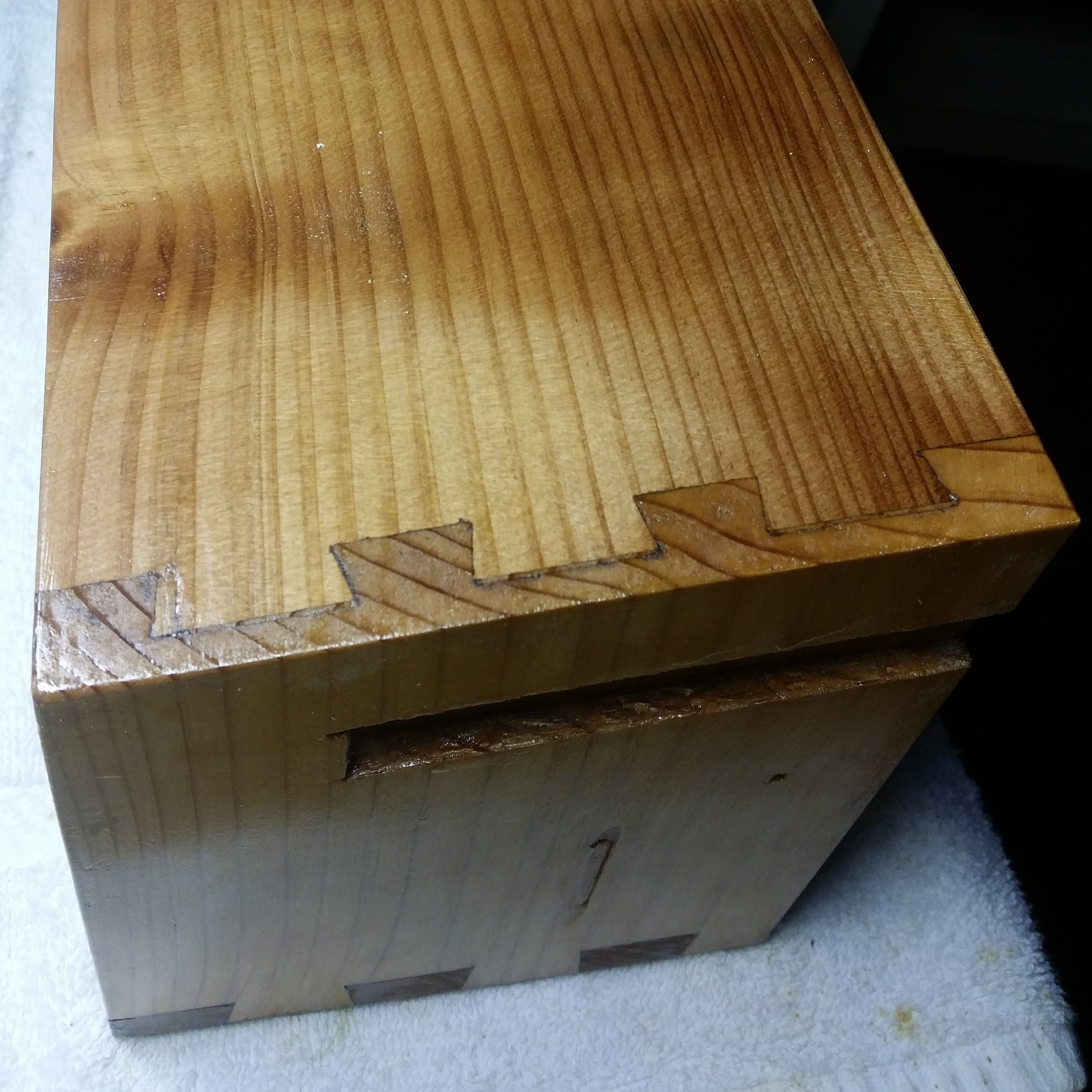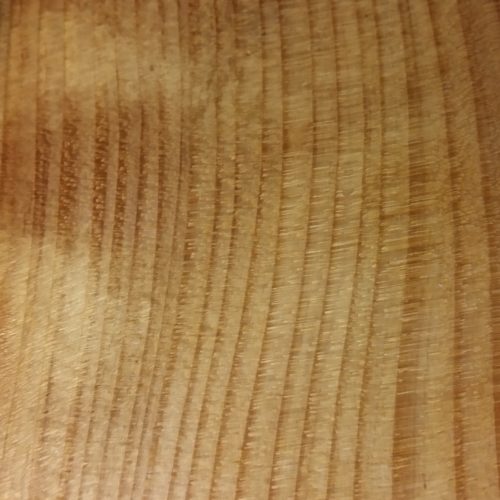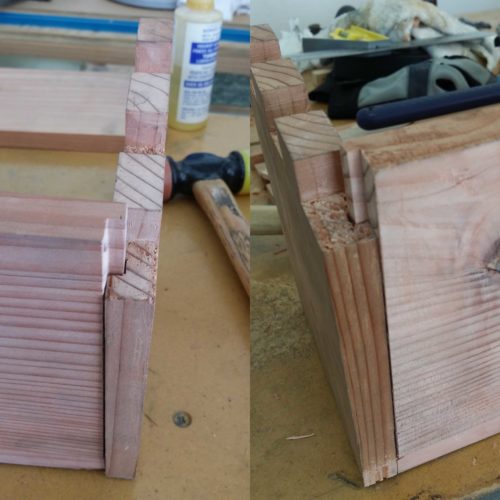I made this windowbox. In the past, I haven’t been satisfied with my efforts at woodworking, so I went slow and tried to really work on the fundamentals. And hey, turns out everything is a hell of a lot easier if you have the ability to do things like cut to a line with a handsaw, and make boards square and true. So I got pretty good with hand planes, chisels, scraper cards, and learned how to re-cut and sharpen saw teeth so that I could make a handsaw functional and sharp again– I had broken a bunch of teeth on mine and they were the induction-hardened type that you can’t sharpen. I also made some tools like a depth gauge and a marking knife: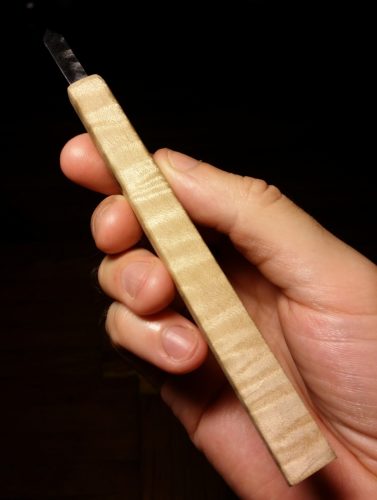
It’s made out of redwood, which is cheap and rot-resistant, and also has a really pretty grain I think:
Using a scraping card is easier than sanding and gives a much better finish. That shimmery effect is caused by the grain switching directions, and so it was quite challenging to work with the handplane. I have a contractor-grade Stanley #5 and a Craftsman block plane from the sixties that I got on eBay, so I took the time to set both of those up properly, and by the end I had them both singing.
Drainage is important for plant health and also can be kind of difficult to get right. In addition, I didn’t want any excess water to drain near the house. So the bottom panel of the box is on a slope, and there’s a 1/4″ trench drain the entire length of the box, which I then covered with mesh. This has worked very well, I haven’t had any issues with root rot:
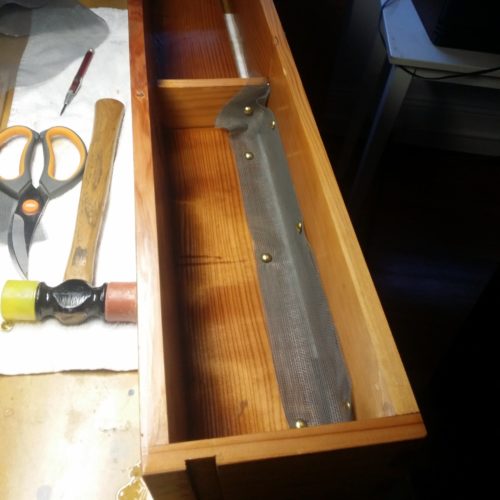 It was my first time attempting dovetails, and I didn’t get them perfect, but with four corners to do I got some good practice in:
It was my first time attempting dovetails, and I didn’t get them perfect, but with four corners to do I got some good practice in:
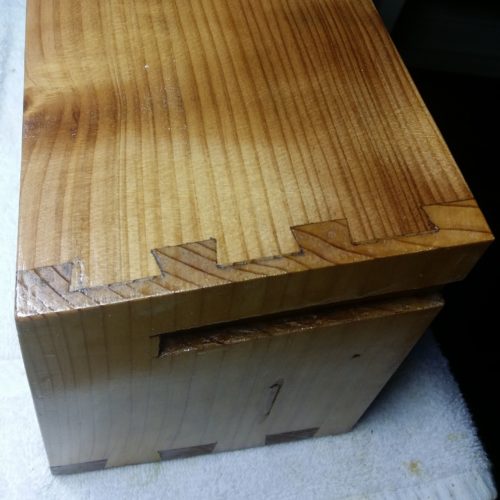
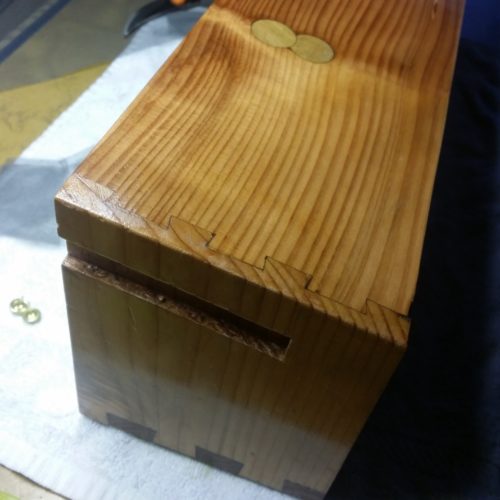 You can see the plugs where I had to insert shims because there was a gap if you look closely. Also in the bottom picture the insert I made to cover up a really ugly knot in what is otherwise a nice looking piece of wood.
You can see the plugs where I had to insert shims because there was a gap if you look closely. Also in the bottom picture the insert I made to cover up a really ugly knot in what is otherwise a nice looking piece of wood.
The bottom piece is held in with a housing dado on three sides. I cut this by first running lines with my marking gauge, then working along with my chisel. It worked okay, but the next tool that I’m going to make is going to be a depth router, because it was pretty tedious.
I have the old-style wooden sash windows and I made wedges that slot into the window tracks and the box so that it installs securely without any screws or fasteners:
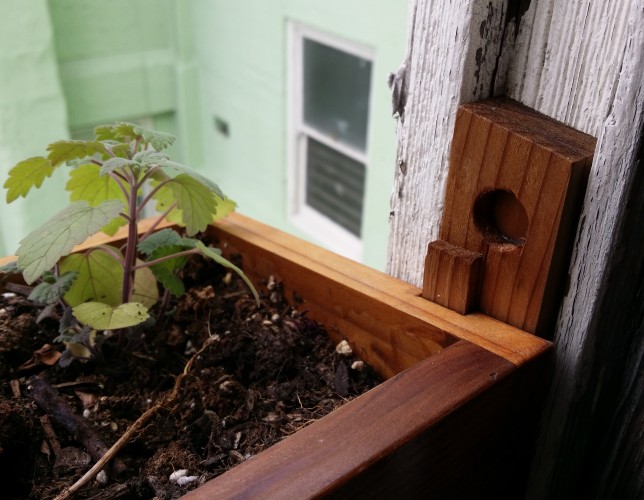
Having done this I think I could take on some cabinets or a bookshelf with no problem– the time spent learning to use woodworking hand tools is a great investment. I have about the most basic toolset possible, with a cheap saw, a 1/4″and 1″chisel, carpenter square, marking gauge, two inexpensive hand planes, and a scraping card, and I was able to get perfectly acceptable results. It’s so great to use something that you’ve made every day.
